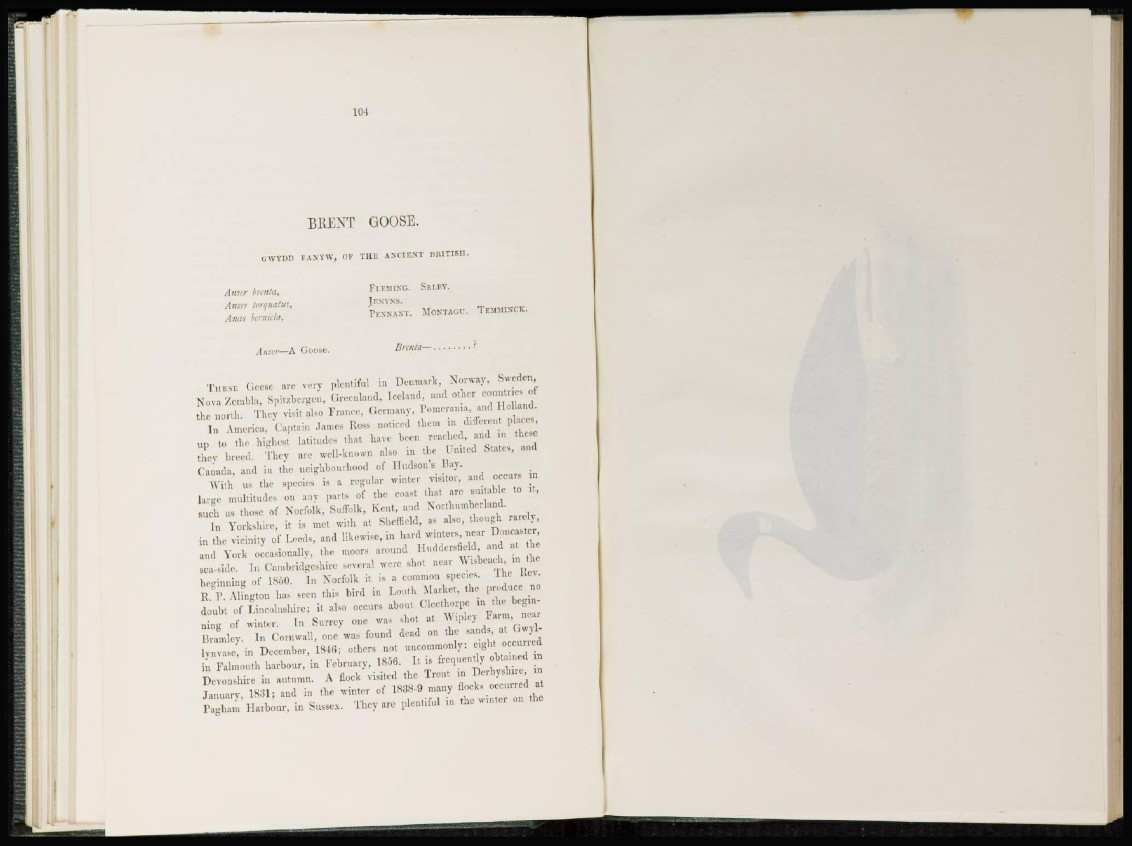
BRENT GOOSE.
CWTDD FAKYW, OF THE ANCIENT BRITISH.
Anstr brenta, FLEMING). SEMIY.
Ansa tmquaius, JENYNS.
Anns bernicia, PENNANT. MONTAGU. TEMMINCK.
Auser—A Goose. Brenta— r
T h e s e Geese are very plentiful in Denmark, Norway, Sweden,
Nova Zcmbla, Spitsbergen, Greenland, Iceland, and other countries of
the north. They visit also France, Germany, Pomerania, and Holland.
In America, (-aptain .lames Ross noticed them in different places,
up to the highest latitudes that ha\ e been reached, and in these
they breed. They are well-known also in the United States, and
Canada, and in the neighbourhood of Hudson's Pay.
With us the species is a regular winter visitor, and occurs in
large multitudes on anv parts of the coast that are suitable to it,
such as those of Norfolk, Suffolk, Kent, and Northumberland.
In Yorkshire, it is met with at Sheffield, as also, though rarely,
in the vicinity of Leeds, and likewise, in hard winters, near Doncastcr,
and York occasionally, the moors around Huddersfield, and at the
sea—ide. In Cambridgeshire several were shot near Wisbeach, in the
beginning of 18o0, In Norfolk it is a common species. The liev.
K. P. Alington lias seen this bird in Louth Market, the produce no
doubt of Lincolnshire; it also occurs about Cleethorpe in the beginning
of winter. In Surrey one was shot at Wiplcy Farm, near
Bramley. In Cornwall, one was found dead on the sands, at Gwyllynvase,
in December, 184b'; others not uncommonly: eight occurred
in Falmouth harbour, in February, 1856. It is frequently obtained in
Devonshire in autumn. A flock visited the Trent in Derbyshire, in
January, 1831; and in the winter of 18;>8-9 many flocks occurred at
Pagham Harbour, in Sussex. They are plentiful in the winter on the